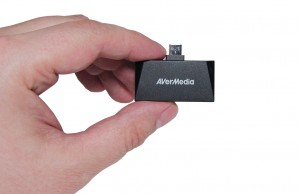Recently, Harmonic introduced EyeQ, a new content-aware video compression solution that enables pay-TV operators to deliver a superior viewing experience on HTTP-connected devices while reducing bandwidth consumption by up to 50 percent — without requiring any changes to underlying existing delivery infrastructure and video players. Ukraine became the third country to deploy the technology for OTT service delivery, and the solution is being used by one of the largest media conglomerates in the country.
The media company is relying on EyeQ compression to deliver 20 channels for its OTT service. Recently, Harmonic also demonstrated the EyeQ solution to a mobile operator based in the Ukraine. In both instances, the operators lacked a CDN and wanted to deliver high-quality HD on a wide range of screens using less bandwidth.
Mediasat visited Harmonic’s Israeli-based office to get more details about new solution from Raz Nitzan, a researcher on the innovation team of Harmonic.
According to Raz, the technology was created while the team was researching machine learning. The goal was to find a different way of encoding to save 50 percent of the bitrate. Prior to EyeQ compression, the standard bitrate savings was around 20 percent. The Harmonic team conducted research on the Human Visual System (HVS), including how our eyes perceive video. We found out that often it is difficult for humans to notice details during movement on the screen. In these cases, the bits are unnecessary and can be removed in real time from the picture while keeping the same quality, providing a 50 percent bandwidth savings.
Under a traditional video delivery approach where video is distributed via satellite, the channel is only encoded once. In the OTT world, each end-user receives the video from a totally different network depending on various factors, such as their location, internet package, router, etc. In fact, the video delivery method can even be different in the same apartment because of the Wi-Fi being used. Video is sent in five different modes. The customer accepts the content depending on capacities at the current moment. If the customer has enough internet speed, he or she can get HD. If it is only 2 Mbps, then SD content is delivered. Using EyeQ, customers that were previously unable to get HD signals can now watch it in all its pristine glory.
Additionally, EyeQ compression allows operators to have extra capacity during major events like elections and sports, which draw a lot of viewers. This is especially important for big operators with a lot of customers.
When was EyeQ launched?
We launched EyeQ compression in September 2016, and it’s been deployed in the real world this year.
Which countries is it used in?
The EyeQ solution is currently being used in Italy, Israel and tested in Ukraine. Israeli customers include a leading telecommunications operator and a tier 1 direct broadcast satellite television provider, which received a ROI for the technology based on CDN savings within a few months.
How much time does it take to cover the cost of EyeQ?
It depends on the CDN price. (The price of CDN in Israel is around $20, 000 per month.)
What is the price of EyeQ?
The license price is relative to the local CDN price.
Is it suitable only for OTT?
Yes the main application for EyeQ compression is OTT video delivery, but we are working on a solution for broadcast and applying to other codecs such as HEVC.

















